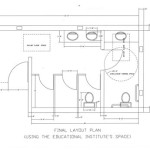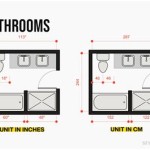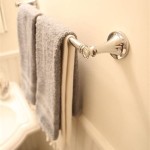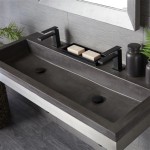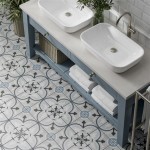Bathroom Toilet and Sink Vanities: A Comprehensive Guide
Bathroom fixtures play a crucial role in both the functionality and aesthetics of the space. Among these, the toilet and sink vanity stand out as essential components, each offering distinct but interconnected contributions to the room's utility and overall design. This article provides a comprehensive overview of bathroom toilets and sink vanities, exploring their various aspects, including types, materials, installation considerations, and design trends.
The bathroom toilet serves the primary function of waste disposal. Modern toilets have evolved significantly from their basic predecessors, incorporating features that enhance efficiency, hygiene, and user comfort. Water conservation is a significant focus in contemporary toilet design, with models employing advanced flushing technologies to minimize water usage without compromising performance. Sink vanities, on the other hand, combine a sink basin with storage solutions, offering a practical and stylish way to manage bathroom essentials. These units come in diverse styles, sizes, and materials, allowing homeowners to customize their bathrooms to reflect their personal preferences and meet their specific needs.
Understanding Bathroom Toilets: Types, Features, and Efficiency
Bathroom toilets are available in a variety of configurations, each offering different advantages in terms of installation, space utilization, and flushing performance. The most common types include two-piece toilets, one-piece toilets, wall-hung toilets, and smart toilets. Two-piece toilets, characterized by a separate tank and bowl, are generally more affordable and easier to install. One-piece toilets, with the tank and bowl fused together, offer a sleek, modern aesthetic and are often easier to clean. Wall-hung toilets, mounted directly to the wall, create a sense of spaciousness and simplify floor cleaning. Smart toilets incorporate advanced features such as heated seats, bidet functions, and automatic flushing.
Flushing mechanisms are a critical aspect of toilet functionality. Gravity-fed toilets rely on the force of gravity to flush waste, while pressure-assisted toilets use compressed air to generate a more powerful flush. Dual-flush toilets offer the option of a partial flush for liquid waste and a full flush for solid waste, contributing to water conservation efforts. The WaterSense program, administered by the Environmental Protection Agency (EPA), certifies toilets that meet stringent water efficiency standards. These high-efficiency toilets (HETs) use 1.28 gallons per flush (gpf) or less, representing a significant reduction compared to older models that may use 3.5 gpf or more.
Materials used in toilet construction typically include vitreous china and porcelain. Vitreous china is a ceramic material that has been treated with a coating to make it more durable and resistant to staining. Porcelain is a similar material that is also commonly used in toilet manufacturing. Both materials are known for their strength, longevity, and ease of cleaning.
Exploring Sink Vanities: Styles, Materials, and Storage Solutions
Sink vanities serve as the focal point in many bathrooms, providing a functional and aesthetically pleasing area for washing and grooming. These units consist of a sink basin integrated into a cabinet or countertop, offering storage space for toiletries, towels, and other bathroom necessities. Sink vanities are available in a wide range of styles, from traditional to contemporary, and can be customized to suit the specific needs and preferences of the homeowner.
Several types of sink vanities cater to different bathroom layouts and design aesthetics. Freestanding vanities stand on their own legs or feet and are a versatile option for various bathroom sizes. Wall-mounted vanities, also known as floating vanities, are attached directly to the wall, creating a sense of spaciousness and simplifying floor cleaning. Corner vanities are designed to fit snugly into corners, maximizing space in smaller bathrooms. Double sink vanities feature two sink basins, providing ample space for multiple users and enhancing convenience in shared bathrooms.
The materials used in sink vanity construction significantly influence their durability, appearance, and maintenance requirements. Wood vanities offer a classic and timeless aesthetic, with options ranging from solid wood to wood veneers. Laminate vanities are a more affordable option, providing a durable and water-resistant surface. Stone vanities, crafted from materials such as granite, marble, or quartz, offer a luxurious and elegant look. The countertop material is a critical consideration, as it must be resistant to water, stains, and scratches. Common countertop materials include granite, marble, quartz, solid surface, and laminate.
Storage is a key consideration when selecting a sink vanity. Vanities with drawers offer convenient storage for smaller items, while vanities with cabinets provide ample space for larger items such as towels and cleaning supplies. Some vanities also include open shelving, providing easy access to frequently used items or allowing for decorative displays. The layout and configuration of the storage space should be carefully considered to ensure that it meets the specific needs of the users.
Installation and Maintenance: Ensuring Longevity and Functionality
Proper installation is crucial for ensuring the longevity and functionality of both bathroom toilets and sink vanities. Toilet installation typically involves connecting the toilet to the water supply line and the waste drain. It is essential to ensure that the toilet is properly sealed to prevent leaks and that the flushing mechanism is functioning correctly. Sink vanity installation involves connecting the sink basin to the water supply lines and the drainpipe. It is also important to ensure that the vanity is securely attached to the wall or floor to prevent movement or instability. Professional installation is recommended for both toilets and sink vanities to ensure that the installation is performed correctly and meets all applicable building codes.
Regular maintenance is essential for keeping both toilets and sink vanities in good condition. Toilets should be cleaned regularly to prevent the buildup of mineral deposits and stains. Using a toilet bowl cleaner and a brush, scrub the bowl thoroughly, paying particular attention to the area under the rim. The exterior of the toilet should also be cleaned regularly with a mild detergent and water. Sink vanities should be wiped down regularly to remove water spots and spills. The countertop should be cleaned with a non-abrasive cleaner to prevent scratching or damage. The cabinet doors and drawers should be inspected periodically to ensure that they are functioning properly. Hinges and drawer slides may need to be lubricated to ensure smooth operation.
Preventative maintenance can help to extend the lifespan of both toilets and sink vanities. Avoid flushing items that can clog the toilet, such as feminine hygiene products, wipes, and paper towels. Regularly inspect the toilet for leaks and repair any leaks promptly. Check the toilet flapper valve periodically and replace it if it is worn or damaged. For sink vanities, avoid placing hot items directly on the countertop, as this can cause damage. Use a cutting board when preparing items on the countertop to prevent scratches. Clean up spills promptly to prevent staining or damage to the countertop or cabinet.
By understanding the different types, features, and materials available for bathroom toilets and sink vanities, homeowners can make informed decisions that meet their specific needs and preferences. Proper installation and regular maintenance are essential for ensuring the longevity and functionality of these essential bathroom fixtures.

Custom Bathroom Vanity Top Bottom Built In Toilet

Aluminum Alloy Vanity Set Bathroom Toilet Accessories Renovation Hdb Bto Home Improvement Condo Plumbing Installation Bowl Rainshower Kitchen Sink Cabinet Mirror Basin Tap Faucet Water Closet Furniture

Choosing The Right Vanity Unit For Your Bathroom

Hope Vanity Unit Toilet Combination Harvey George

Dene Grey Rh Vanity Unit With Toilet Bathroom Republic

9 Bathroom Suppliers S To Get That Perfect Sink

Pemberton L Shape 2 Drawer Basin And Toilet Combination Vanity Unit Grey Buy At Bathroom City

Aric 1100mm Rh Bathroom Basin Combination Vanity Unit White And Ingersly Back To Wall Wc Toilet
Bathroom Vanity Wc Unit Wash Basin Set Soft Close Coupled D Shaped Toilet

1500mm Bathroom Suite Victorian Plumbing
Related Posts

